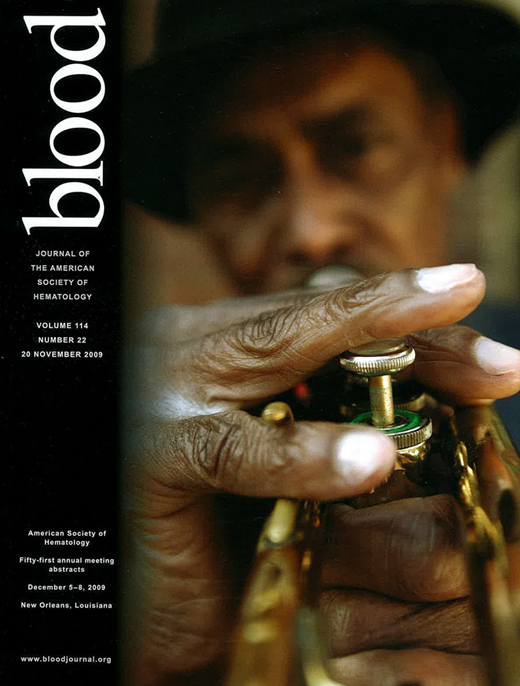Abstract
Abstract 2999
Poster Board II-968
The Gi-coupled ADP receptor, P2Y12, is the target of clopidogrel bisulfate (Plavix), currently the most successful anti-platelet strategy used in the clinic. In a recent study, we have shown that the Ca2+-sensing nucleotide exchange factor, CalDAG-GEFI, and P2Y12 represent the major signaling pathways leading to Rap1 and integrin activation in platelets (Cifuni et al., 2008, Blood). In the present study, we have further evaluated the importance of CalDAG-GEFI signaling and Rap1 activation for various aspects of platelet activation, and we have compared thrombus formation of CalDAG-GEFI−/− and WT/clopidogrel platelets under static and flow conditions in vitro. Our studies establish a revised model for platelet activation by collagen. In platelets activated with threshold concentrations of GPVI agonists, CalDAG-GEFI serves as a highly sensitive response element to Ca2+ that allows for the rapid activation of Rap1. CalDAG-GEFI-mediated Rap1 activation triggers a first wave of integrin activation and ERK (MAPK) signaling, followed by TxA2 release. TxA2 provides crucial feedback for the activation of PKC and granule/ADP release. ADP in turn triggers the second, P2Y12-dependent wave of Rap1-mediated signaling events, leading to the sustained activation of integrins and further release of TxA2. Higher concentrations of GPVI agonists lead to the concomitant activation of CalDAG-GEFI and PKC, facilitating platelet aggregation independent of feedback by endogenous TxA2. Under physiological flow conditions, CalDAG-GEFI-dependent platelet activation (clopidogrel-treated WT platelets) allowed for the formation of small but unstable thrombi, which rapidly disintegrated at high shear rates. In contrast, CalDAG-GEFI−/− platelets (P2Y12-dependent platelet activation) in anticoagulated blood firmly adhered to the thrombogenic surface but failed to form thrombi, even at high concentrations of collagen. Addition of exogenous TxA2 to anticoagulated CalDAG-GEFI−/− blood did not restore thrombus formation under flow. However, small thrombi were observed with non-anticoagulated CalDAG-GEFI−/− blood perfused at venous but not arterial shear rates, suggesting that a) locally generated thrombin facilitates the recruitment of free flowing CalDAG-GEFI−/− platelets to already adherent platelets, and b) the slow kinetics of P2Y12-dependent Rap1 activation only supports thrombin-induced platelet-platelet cohesion at low shear conditions. In conclusion, our studies demonstrate that CalDAG-GEFI/Rap1 signaling plays a critical role for the first wave of integrin activation and TxA2 generation important for platelet adhesion to a thrombogenic surface. Signaling by P2Y12/Rap1 is essential for sustained platelet activation/thrombus stabilization and partially compensates for CalDAG-GEFI/Rap1-mediated platelet adhesion under low flow conditions.
No relevant conflicts of interest to declare.
Author notes
Asterisk with author names denotes non-ASH members.

